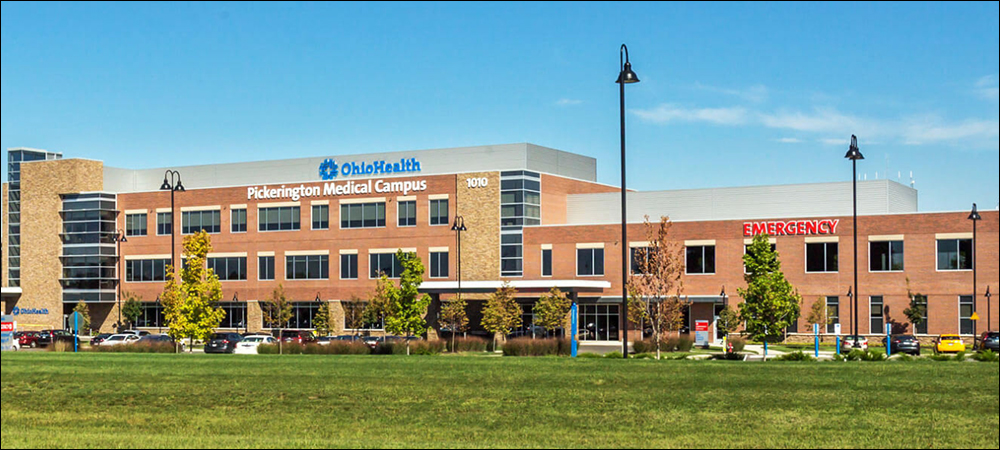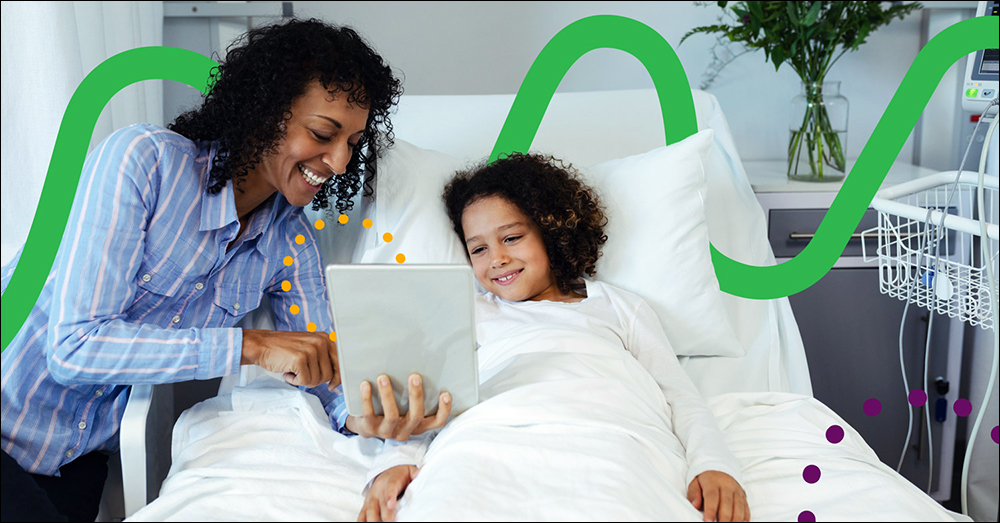
Pickerington Methodist Hospital
OhioHealth is adopting smart-room technology at its new Pickerington Methodist Hospital, designed to make hospitalization more comfortable for patients and their family members, while improving the work experience for those who treat them. The solution, provided by eVideon, integrates with real-time location system (RTLS) solutions, as well as other technologies, to provide entertainment and education, in addition to more personalized service for patients. In part, that is accomplished by identifying healthcare workers as they enter a patient room, then by sharing information about them for those in the room on an interactive display.

Tom Gutman
The solution, known as Vibe Health, also includes a smart television, a tablet, digital signage and software management. The hospital opted to deploy the solution after conducting surveys of both patients and personnel, then creating a simulated room to test the technology and allow workers to take part in the testing, according to Tom Gutman, OhioHealth’s senior consultant of learning simulation. The collaborative approach, including testing, was imperative for the facility, he says, adding, “We don’t just want to put in tech for tech’s sake.”
The “Hospital of the Future” project started in 2022 to explore what could be possible. Its team identified the right solution in the summer of that year, with the new hospital’s construction set to be completed in December 2023. The team started with one-on-one interviews of patients and providers regarding the challenges they experience, as well as what they would like to experience in a future hospital. “We wanted to start with people who recently utilized the hospital, or who use it day-to-day,” says Erika Braun, OhioHealth’s advisor for user experience and product design.
Setting Priorities and Meeting Challenges
The team collected a list of priorities, Braun says, the first of which was communication between employees and patients. The second priority was to address the distractions and busywork that took nurses away from patient bedsides, including manually searching for equipment and data entry. The third challenge for workers was based on connected technology, as the team wanted to deploy a solution that would make workflows easier, offer automation without replacing the human touch, and make the hospital feel warm and comfortable. Another priority was personalization. “We don’t want our patients to ever feel like a number,” she states. “It’s important to us that patients feel heard.”

The solution includes a digital door sign, integrated with the hospital’s Epic electronic medical records (EMR) software, which displays information to healthcare providers related to a particular room’s patient before they enter, which can include allergies or isolation status. The digital door sign has LED lights around it, Gutman says, which are triggered by events in the room to provide alerts or status updates. Inside the room, a TV at the patient’s footwall provides interactive content, including food ordering, education, movies and a digital whiteboard, all on a single screen.

Erika Braun
The RTLS functionality, provided by OhioHealth’s Critical Alert nurse-call system, consists of battery-powered, IR-enabled badges worn by staff members. Each badge’s unique ID number is linked to details about a specific worker, Gutman explains, including that person’s picture and role, such as a nurse, surgeon or physical therapist. Those wearing the badges may include patient service assistants and hospitalists (the attending providers overseeing patient care).
RTLS to Introduce Visitors to Patients
When an individual wearing a badge enters a room, the RTLS sensor transmits data to sensors mounted at the entrance, which forward that information to the Vibe Health software. The software then identifies the individual and displays their picture and description on the TV screen. In this way, patients are less likely to be confused by the comings and goings of personnel. In the long run, Gutman says, the hospital may do more with the technology. “There are so many use cases when we look at RTLS,” he states, related to creating a more efficient space. By December of this year, the new hospital will be open with 66 rooms, all of which are expected to be smart rooms.

Scott King
The Vibe Health solution is in use at hospitals leveraging several key features, says Scott King, eVideon’s CTO. The interactive TV, he explains, transforms what was previously one-way entertainment to an interactive experience. It can include sleep aids, such as relaxing sounds, and the system can automatically trigger educational videos that are relevant to patients based on their condition. “It ends up being a very personalized experience,” King states. Because the Vibe Health software can be integrated with a hospital’s EMR software, patients’ names can be displayed on a screen, along with a greeting, once they are assigned their rooms.
The system tracks what has been watched, and it can resume content if a patient has to leave the room. Additionally, patients can be given credit for any educational instructions they view. Vibe Health’s bedside tablet companion is another part of the solution, King says, as is the digital whiteboard in the room that can list relevant data, either on a dedicated screen or, as OhioHealth has deployed the system, directly on the TV monitor. “It replaces a dry-erase board,” King states.
The collected RTLS-based data can be provided with a variety of technologies, King reports. The software is technology-agnostic, he says, so Bluetooth, RFID or other systems could be deployed to identify individuals as they enter. The data can also be made available to personnel, who can view a history of who has been in a particular patient’s room, along with for how long and when that occurred. With each healthcare company, King says, eVideon works with management and their IT and clinical teams throughout planning and deployment.
Key Takeaways:
- OhioHealth has developed a smart room that will be deployed at its new hospital, which uses RTLS technology to identify staff members and display that information as they enter patient rooms.
- The system, which includes interactive screens and digital signage, is designed to improve patient comfort and make work more efficient for personnel.

